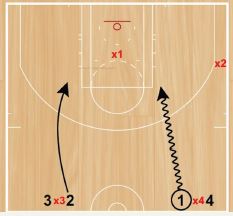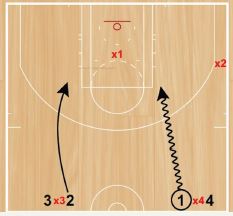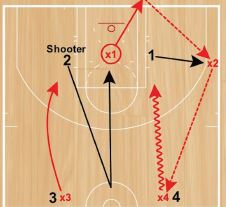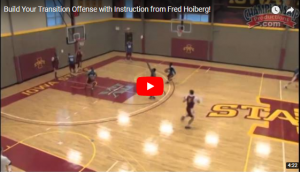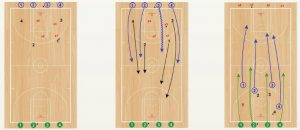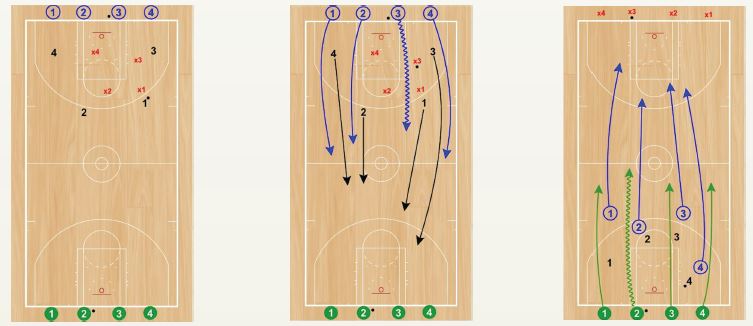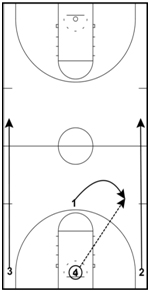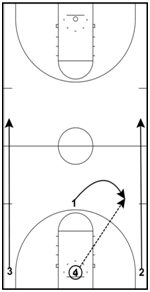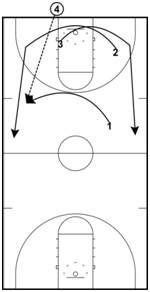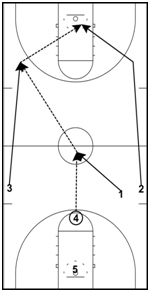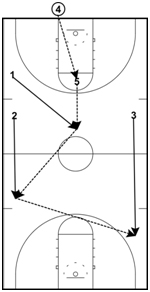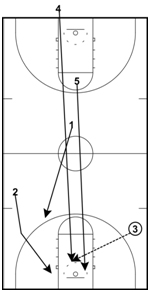This transition drill is from Drew Hanlen’s Transition Drill Book.
Drew is an NBA Strategic Skills Coach & Consultant that has helped over 25 NBA and NBA pre-draft players.
Drew is the Head Skills Coach for Pure Sweat Basketball.
He has run his internationally renowned Elite Skills Clinics in over 30 states and 4 countries over the past several years.
2v1 Continuous Box Drill
Players will be divided into two teams. One player from the Red Team will start in the paint on defense and another player from the Red Team will start on the angle, as an outlet.
Two players from the Black Team will start at half-court with the basketball.
Behind them will be two players from the Red Team. Behind them will be two players from the Black Team. You can have as many teams of two as you want, but make sure there are an even amount of Black Team groups and Red Team groups.
Offensive players will attack the defender and try to score in the 2v1 situation. Offensive players are allowed two passes to attempt a shot. One shot per possession.
Offensive player that shoots (or turns the ball over) must sprint and touch inside the center circle, and then sprint back on defense, while the defender must secure the rebound or get the made field goal out of the net and then outlet the basketball to their teammate at the angle.
If the defender gets a steal, they can quickly outlet the basketball to their teammate at the angle as well. As soon as the player receives the outlet, they will advance the basketball to their teammates that are ready to attack at half-court. The offensive player that did not shoot will rotate to the outlet line at the angle.
Continue this rotation until one of the teams scores 12 baskets.
